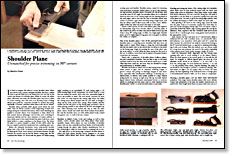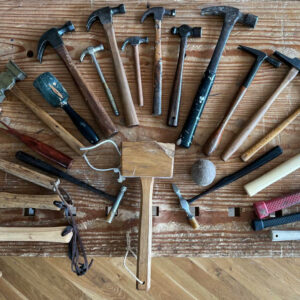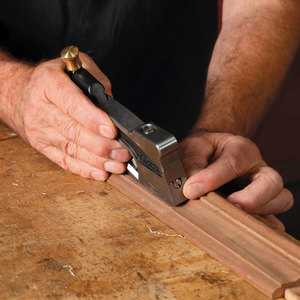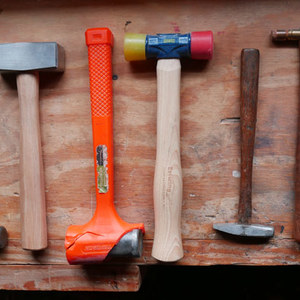Shoulder Plane
Unmatched for precise trimming in 90-degree corners
Synopsis: When you need to trim a tenon’s end-grain shoulder, fine-tune a rabbet joint or smooth flush up to an obstruction, you can rely on the control and finesse of a shoulder plane. In this article, Maurice Fraser covers the history of the tool and offers direction on when to use a shoulder plane or a rabbet plane. He explains how to choose and use them, and what to look for in classics or bargains. A comparison chart sums up feature differences among a variety of planes.
It’s hard to imagine life without a trusty shoulder plane. When you need to trim a tenon’s end-grain shoulder, fine-tune a rabbet joint or smooth flush up to an obstruction, you can rely on the control and finesse of a shoulder plane. While its cousin, the rabbet plane, efficiently cuts joints, the shoulder plane was born to refine or correct existing ones: The joint is its shooting board. If things always went perfectly, correctives wouldn’t be needed. But erring, reportedly, is human, and that’s when these tools can be “divine.”
Shoulder planes probably didn’t appear much before the mid- 1800s. They are likely a product of the burgeoning of metal technology during the Industrial Revolution, when metal sheathing was applied to wooden objects, from handplanes to ships. Metal tools have several obvious advantages over wooden ones, including dimensional stability and the wear resistance of contact surfaces. A more subtle point is how metal elevated the plane body from a mere blade holder to a major contributor to the finesse of cut. The shoulder plane is a prime example—a classic wooden rabbet plane that was not simply ironclad but transformed into something quite new.
Before the Industrial Revolution, worn, wide-mouth wooden planes were a fact of life. Toolmakers could shrink mouth openings by flipping the blade, bevel upward, and thereby eliminate the gap between the mouth’s rear lip and the blade’s cutting edge. But this combined the blade’s 30° bevel with the plane’s 45° blade-seating angle, resulting in an unworkable 75° total cutting angle. A 15° blade-seating angle would compensate, but would result in a very thin sole behind the mouth. Such a thin sole, impossibly fragile in wood, was possible in metal. The new mouth, narrower by more than 300%, not only supports the cutting edge better, but makes the cutting action almost integral with the sole itself, as though a sharp rear lip of the mouth were cutting. These durable, hair-fine mouths (see the left photo on the facing page) promised a way to refine planing, parallel to that offered by the then new-fangled cap iron. Other finessing tools evolved this way as well: the miter plane, chariot, thumb and small miter block (today’s block plane). But only the shoulder, from out of the rabbet plane’s body, carried this genetic trait: It could work into corners.
From Fine Woodworking #76
For the full article, download the PDF below:
Fine Woodworking Recommended Products

Stanley Powerlock 16-ft. tape measure

Olfa Knife

Starrett 4" Double Square





















Log in or create an account to post a comment.
Sign up Log in